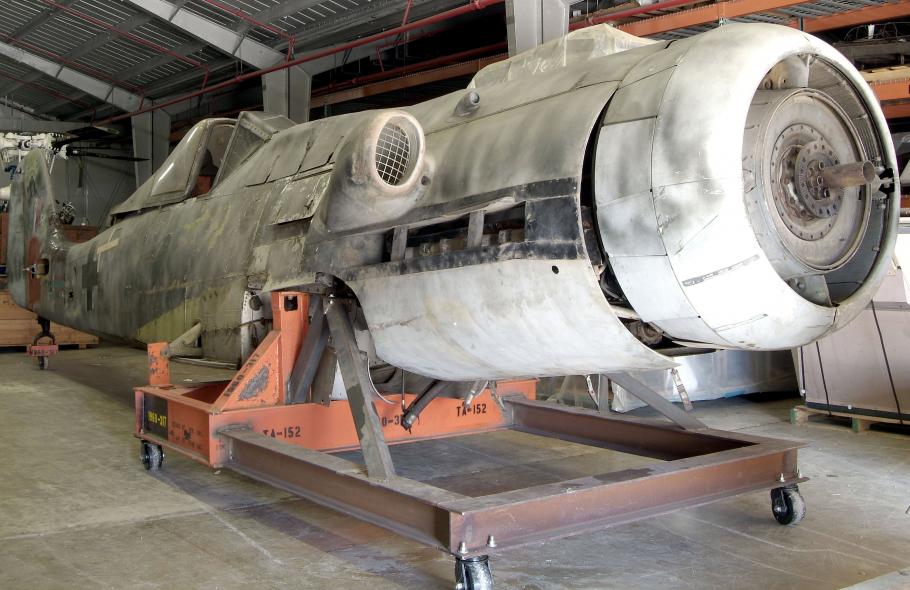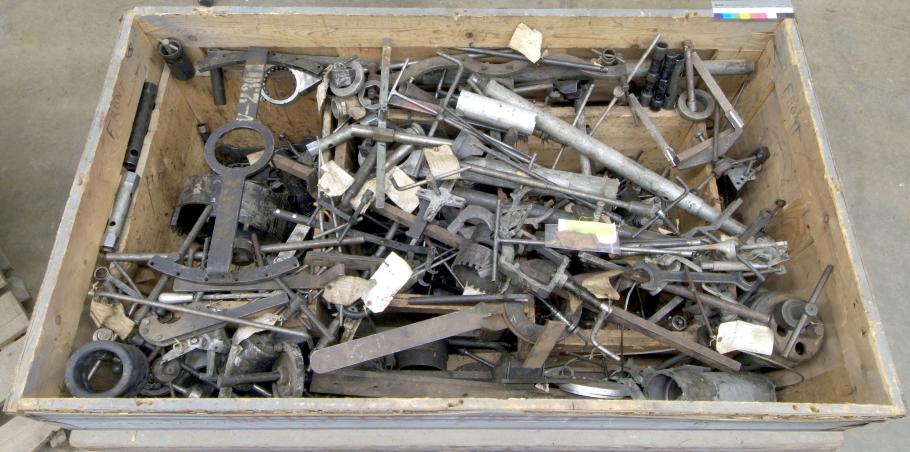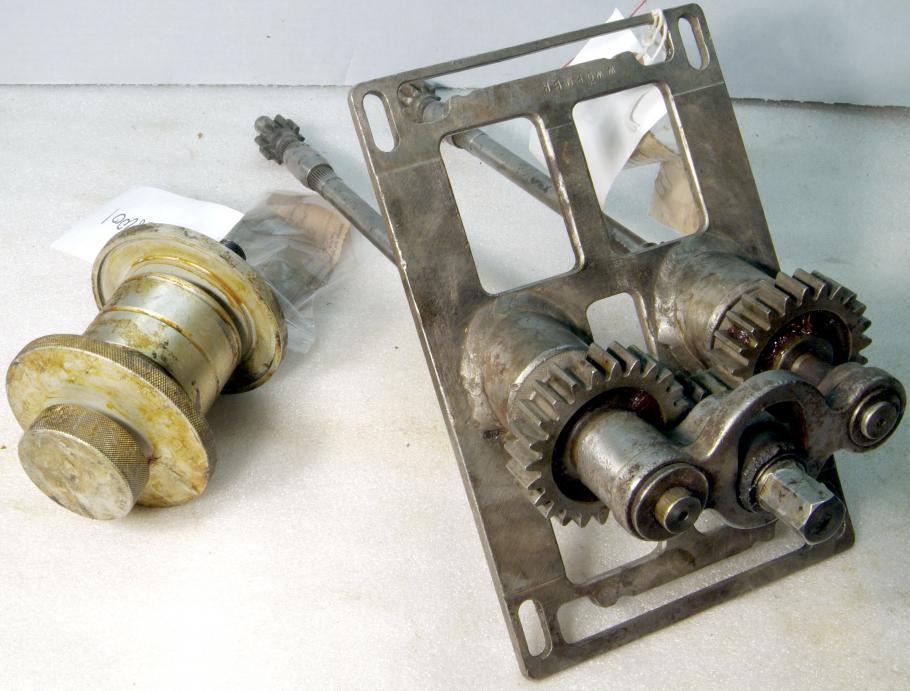In the years following WWII the United States and her Allies conducted engineering and flight tests of many different types of captured or surrendered Axis aircraft, primarily from Germany and Japan. Many of these aircraft were acquired by Allied and US technical intelligence collection teams. It was ordered that at least one of each type of enemy aircraft be captured and evaluated by these teams, and that each aircraft type be maintained in flyable condition for a minimum of one year. To make this possible all technical data and support materiel available (such as tool kits, parts, etc.) had to also be captured to meet this requirement.
Several of these captured aircraft were donated to the National Air and Space Museum upon completion of US Air Force testing in the late 1940s and early 1950s, and much of the supporting parts and tools came along with them. At the time loose tools and toolkits were not seen as accessionable objects, merely as tools to be used for repair and possible future restoration purposes. They remained in storage for years. Today this collection of tools contains some of the very last examples of their kind to be found anywhere in the world. It is due to the historically important and unique nature of these objects that a Collections Care and Preservation Fund (CCPF) has enabled a project to catalog, re-house, and preserve these irreplaceable examples of tools and kits.
The project began in July of 2010. The cataloging, condition assessment, and digital photography of this varied and unique collection was begun immediately so that a comprehensive inventory of this diverse collection could be created.
One goal of the project is to create a curatorial and collections guideline for the proper and safe use of these tools, ensuring they remain in an accessible yet preserved condition. To ensure future access to restoration specialists and researchers, a series of protective storage cabinets will provide adequate space that maximizes accessibility yet minimizes unnecessary handling. This system of storage will also allow for easier transportation of the collection to the new Mary Baker Engen Restoration Hangar at the Steven F. Udvar-Hazy Center. Additionally, it is necessary to prepare most of these tools for long-term, stable storage via thorough cleaning to remove old, soiled, or failing preservative coatings and service-related grime, and also treating areas of active surface corrosion. Once cleaned and treated each tool will then have a modern preservative coating reapplied, ensuring long-term stabilization and usability.
Copies of these tools have been made in the past to perform vital restoration work on some of the associated captured aircraft, and in some instances the tools themselves have been used. But once they are lost, then any similar restoration or stabilization work will be made much more difficult, if not impossible. This project will help ensure that these important objects are preserved.




